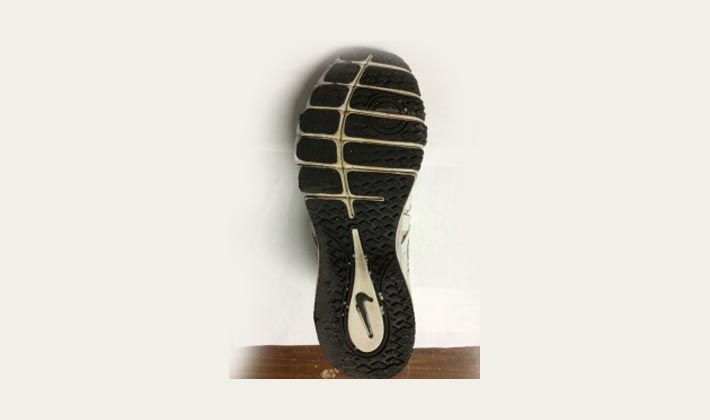A lot of people are aware that feet that roll excessively inwards, causing the arches to flatten (overpronation), can eventually cause pain and mobility issues. However, few people realize that the opposite situation, feet that do not roll in at all (underpronation) can cause serious problems too.
During a normal, healthy stride, when the heel touches the ground, the midfoot and heel will roll slightly down and inwards to absorb the shock of the step. This is known as pronation. However, when the foot does not roll inwards, and in some cases can roll to the outside, a lack of shock absorption occurs. You can compare this to shocks on your car; as you go over bumps in the road, they compress, absorbing shock so you don’t feel the full impact. When your foot does not pronate, your body feels the full impact. This continual lack of proper shock absorption can lead to heel pain (plantar fasciitis), forefoot pain (metatarsalgia or ‘ball of foot‘ pain), shin splints, knee pain, and lower back pain due to poor body alignment. Another common issue is reoccurring ankle sprains, especially if your feet or ankle rolls to the outside.
Underpronation is common with people who have high arches and rigid feet. The best way to tell if your feet do not pronate is to have your gait pattern analyzed. Another quick way to test yourself is to look at the wear on your shoes. Neutral gait patterns, which have a reasonable amount of pronation, will usually show a neutral wear pattern. You can tell as there will generally be wear on the outside heel portion of the shoe. This occurs due to initial heel strike being on the outside of the heel and is considered “normal”. If you underpronate, that wear can continue up the outside of your shoe all the way to where your fifth toe sits. This occurs because your foot does not roll inwards to absorb impact, and all the pressure stays on the outside of your foot. It is also common to wear shoes out quickly because they take more impact when you walk or run.

Worn by an underpronator, this shoe shows wear up the outside.
Pronation is part of your natural gait so if you are an underpronator it is very hard to change it. However, there are some simple things you can do to help your body with the lack of shock absorption and reduce your risk of injury, including:
- Wear properly-fitted, supportive shoes and replace them regularly as worn shoes worsen the effects of under-pronation
- Look for shoes that have extra cushioning to provide extra shock absorption
- Use custom foot orthotics or off-the-shelf insoles to help with weight distribution and increased shock absorption
When it comes to underpronation, prevention is the best approach. Take a look at the wear pattern on your footwear and if they indicate you may be an underpronator, book an appointment with your local Canadian Certified Pedorthist. Your Pedorthist will do a full gait assessment and recommend a treatment program that is appropriate for you.
By Peter Morcom C. Ped (C) Maple Ridge, BC
